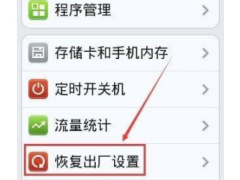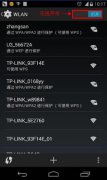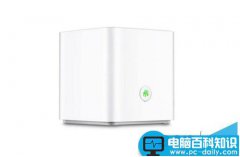概 述
Kubernetes集群的搭建方法其实有多种,比如我在之前的文章《利用K8S技术栈打造个人私有云(连载之:K8S集群搭建)》中使用的就是二进制的安装方法。虽然这种方法有利于我们理解 k8s集群,但却过于繁琐。而 kubeadm是 Kubernetes官方提供的用于快速部署Kubernetes集群的工具,其历经发展如今已经比较成熟了,利用其来部署 Kubernetes集群可以说是非常好上手,操作起来也简便了许多,因此本文详细叙述之。
注: 本文首发于 My Personal Blog:CodeSheep·程序羊,欢迎光临 小站
节点规划
本文准备部署一个 一主两从 的 三节点 Kubernetes集群,整体节点规划如下表所示:
主机名IP角色k8s-master192.168.39.79k8s主节点k8s-node-1192.168.39.77k8s从节点k8s-node-2192.168.39.78k8s从节点
下面介绍一下各个节点的软件版本:
操作系统:CentOS-7.4-64BitDocker版本:1.13.1Kubernetes版本:1.13.1所有节点都需要安装以下组件:
Docker:不用多说了吧kubelet:运行于所有 Node上,负责启动容器和 Podkubeadm:负责初始化集群kubectl: k8s命令行工具,通过其可以部署/管理应用 以及CRUD各种资源准备工作
所有节点关闭防火墙systemctl disable firewalld.service systemctl stop firewalld.service禁用SELINUX
setenforce 0vi /etc/selinux/configSELINUX=disabled所有节点关闭 swap
swapoff -a设置所有节点主机名
hostnamectl --static set-hostname k8s-masterhostnamectl --static set-hostname k8s-node-1hostnamectl --static set-hostname k8s-node-2所有节点 主机名/IP加入 hosts解析
编辑 /etc/hosts文件,加入以下内容:
192.168.39.79 k8s-master192.168.39.77 k8s-node-1192.168.39.78 k8s-node-2
组件安装
0x01. Docker安装(所有节点)
不赘述 ! ! !
0x02. kubelet、kubeadm、kubectl安装(所有节点)
首先准备repocat>>/etc/yum.repos.d/kubrenetes.repo<<EOF[kubernetes]name=Kubernetes Repobaseurl=https://mirrors.aliyun.com/kubernetes/yum/repos/kubernetes-el7-x86_64/gpgcheck=0gpgkey=https://mirrors.aliyun.com/kubernetes/yum/doc/yum-key.gpgEOF然后执行如下指令来进行安装
setenforce 0sed -i 's/^SELINUX=enforcing$/SELINUX= disabled/' /etc/selinux/configyum install -y kubelet kubeadm kubectlsystemctl enable kubelet && systemctl start kubelet
Master节点配置
0x01. 初始化 k8s集群
为了应对网络不畅通的问题,我们国内网络环境只能提前手动下载相关镜像并重新打 tag :
docker pull mirrorgooglecontainers/kube-apiserver:v1.13.1docker pull mirrorgooglecontainers/kube-controller-manager:v1.13.1docker pull mirrorgooglecontainers/kube-scheduler:v1.13.1docker pull mirrorgooglecontainers/kube-proxy:v1.13.1docker pull mirrorgooglecontainers/pause:3.1docker pull mirrorgooglecontainers/etcd:3.2.24docker pull coredns/coredns:1.2.6docker pull registry.cn-shenzhen.aliyuncs.com/cp_m/flannel:v0.10.0-amd64docker tag mirrorgooglecontainers/kube-apiserver:v1.13.1 k8s.gcr.io/kube-apiserver:v1.13.1docker tag mirrorgooglecontainers/kube-controller-manager:v1.13.1 k8s.gcr.io/kube-controller-manager:v1.13.1docker tag mirrorgooglecontainers/kube-scheduler:v1.13.1 k8s.gcr.io/kube-scheduler:v1.13.1docker tag mirrorgooglecontainers/kube-proxy:v1.13.1 k8s.gcr.io/kube-proxy:v1.13.1docker tag mirrorgooglecontainers/pause:3.1 k8s.gcr.io/pause:3.1docker tag mirrorgooglecontainers/etcd:3.2.24 k8s.gcr.io/etcd:3.2.24docker tag coredns/coredns:1.2.6 k8s.gcr.io/coredns:1.2.6docker tag registry.cn-shenzhen.aliyuncs.com/cp_m/flannel:v0.10.0-amd64 quay.io/coreos/flannel:v0.10.0-amd64docker rmi mirrorgooglecontainers/kube-apiserver:v1.13.1 docker rmi mirrorgooglecontainers/kube-controller-manager:v1.13.1 docker rmi mirrorgooglecontainers/kube-scheduler:v1.13.1 docker rmi mirrorgooglecontainers/kube-proxy:v1.13.1 docker rmi mirrorgooglecontainers/pause:3.1 docker rmi mirrorgooglecontainers/etcd:3.2.24 docker rmi coredns/coredns:1.2.6docker rmi registry.cn-shenzhen.aliyuncs.com/cp_m/flannel:v0.10.0-amd64
然后再在 Master节点上执行如下命令初始化 k8s集群:
kubeadm init --kubernetes-version=v1.13.1 --apiserver-advertise-address 192.168.39.79 --pod-network-cidr=10.244.0.0/16--kubernetes-version: 用于指定 k8s版本--apiserver-advertise-address:用于指定使用 Master的哪个network interface进行通信,若不指定,则 kubeadm会自动选择具有默认网关的 interface--pod-network-cidr:用于指定Pod的网络范围。该参数使用依赖于使用的网络方案,本文将使用经典的flannel网络方案。
执行命令后,控制台给出了如下所示的详细集群初始化过程:
[root@localhost ~]# kubeadm init --config kubeadm-config.yamlW1224 11:01:25.408209 10137 strict.go:54] error unmarshaling configuration schema.GroupVersionKind{Group:\"kubeadm.k8s.io\", Version:\"v1beta1\", Kind:\"ClusterConfiguration\"}: error unmarshaling JSON: while decoding JSON: json: unknown field \"\u00a0 podSubnet”[init] Using Kubernetes version: v1.13.1[preflight] Running pre-flight checks[preflight] Pulling images required for setting up a Kubernetes cluster[preflight] This might take a minute or two, depending on the speed of your internet connection[preflight] You can also perform this action in beforehand using 'kubeadm config images pull’[kubelet-start] Writing kubelet environment file with flags to file \"/var/lib/kubelet/kubeadm-flags.env”[kubelet-start] Writing kubelet configuration to file \"/var/lib/kubelet/config.yaml”[kubelet-start] Activating the kubelet service[certs] Using certificateDir folder \"/etc/kubernetes/pki”[certs] Generating \"etcd/ca\" certificate and key[certs] Generating \"etcd/healthcheck-client\" certificate and key[certs] Generating \"etcd/server\" certificate and key[certs] etcd/server serving cert is signed for DNS names [localhost.localdomain localhost] and IPs [192.168.39.79 127.0.0.1 ::1][certs] Generating \"etcd/peer\" certificate and key[certs] etcd/peer serving cert is signed for DNS names [localhost.localdomain localhost] and IPs [192.168.39.79 127.0.0.1 ::1][certs] Generating \"apiserver-etcd-client\" certificate and key[certs] Generating \"ca\" certificate and key[certs] Generating \"apiserver-kubelet-client\" certificate and key[certs] Generating \"apiserver\" certificate and key[certs] apiserver serving cert is signed for DNS names [localhost.localdomain kubernetes kubernetes.default kubernetes.default.svc kubernetes.default.svc.cluster.local] and IPs [10.96.0.1 192.168.39.79][certs] Generating \"front-proxy-ca\" certificate and key[certs] Generating \"front-proxy-client\" certificate and key[certs] Generating \"sa\" key and public key[kubeconfig] Using kubeconfig folder \"/etc/kubernetes”[kubeconfig] Writing \"admin.conf\" kubeconfig file[kubeconfig] Writing \"kubelet.conf\" kubeconfig file[kubeconfig] Writing \"controller-manager.conf\" kubeconfig file[kubeconfig] Writing \"scheduler.conf\" kubeconfig file[control-plane] Using manifest folder \"/etc/kubernetes/manifests”[control-plane] Creating static Pod manifest for \"kube-apiserver”[control-plane] Creating static Pod manifest for \"kube-controller-manager”[control-plane] Creating static Pod manifest for \"kube-scheduler”[etcd] Creating static Pod manifest for local etcd in \"/etc/kubernetes/manifests”[wait-control-plane] Waiting for the kubelet to boot up the control plane as static Pods from directory \"/etc/kubernetes/manifests\". This can take up to 4m0s[apiclient] All control plane components are healthy after 24.005638 seconds[uploadconfig] storing the configuration used in ConfigMap \"kubeadm-config\" in the \"kube-system” Namespace[kubelet] Creating a ConfigMap \"kubelet-config-1.13\" in namespace kube-system with the configuration for the kubelets in the cluster[patchnode] Uploading the CRI Socket information \"/var/run/dockershim.sock\" to the Node API object \"localhost.localdomain\" as an annotation[mark-control-plane] Marking the node localhost.localdomain as control-plane by adding the label \"node-role.kubernetes.io/master=''”[mark-control-plane] Marking the node localhost.localdomain as control-plane by adding the taints [node-role.kubernetes.io/master:NoSchedule][bootstrap-token] Using token: 26uprk.t7vpbwxojest0tvq[bootstrap-token] Configuring bootstrap tokens, cluster-info ConfigMap, RBAC Roles[bootstraptoken] configured RBAC rules to allow Node Bootstrap tokens to post CSRs in order for nodes to get long term certificate credentials[bootstraptoken] configured RBAC rules to allow the csrapprover controller automatically approve CSRs from a Node Bootstrap Token[bootstraptoken] configured RBAC rules to allow certificate rotation for all node client certificates in the cluster[bootstraptoken] creating the \"cluster-info\" ConfigMap in the \"kube-public” namespace[addons] Applied essential addon: CoreDNS[addons] Applied essential addon: kube-proxyYour Kubernetes master has initialized successfully!To start using your cluster, you need to run the following as a regular user: mkdir -p $HOME/.kube sudo cp -i /etc/kubernetes/admin.conf $HOME/.kube/config sudo chown $(id -u):$(id -g) $HOME/.kube/configYou should now deploy a pod network to the cluster.Run \"kubectl apply -f [podnetwork].yaml\" with one of the options listed at: https://kubernetes.io/docs/concepts/cluster-administration/addons/You can now join any number of machines by running the following on each nodeas root: kubeadm join 192.168.39.79:6443 --token 26uprk.t7vpbwxojest0tvq --discovery-token-ca-cert-hash sha256:028727c0c21f22dd29d119b080dcbebb37f5545e7da1968800140ffe225b0123[root@localhost ~]#
0x02. 配置 kubectl
在 Master上用 root用户执行下列命令来配置 kubectl:
echo \"export KUBECONFIG=/etc/kubernetes/admin.conf\" >> /etc/profilesource /etc/profile echo $KUBECONFIG
0x03. 安装Pod网络
安装 Pod网络是 Pod之间进行通信的必要条件,k8s支持众多网络方案,这里我们依然选用经典的 flannel方案
首先设置系统参数:sysctl net.bridge.bridge-nf-call-iptables=1然后在 Master节点上执行如下命令:
kubectl apply -f kube-flannel.yaml
kube-flannel.yaml 文件在此
一旦 Pod网络安装完成,可以执行如下命令检查一下 CoreDNS Pod此刻是否正常运行起来了,一旦其正常运行起来,则可以继续后续步骤
kubectl get pods --all-namespaces -o wide
同时我们可以看到主节点已经就绪:kubectl get nodes
添加 Slave节点
在两个 Slave节点上分别执行如下命令来让其加入Master上已经就绪了的 k8s集群:
kubeadm join --token <token> <master-ip>:<master-port> --discovery-token-ca-cert-hash sha256:<hash>
如果 token忘记,则可以去 Master上执行如下命令来获取:
kubeadm token list
上述kubectl join命令的执行结果如下:
[root@localhost ~]# kubeadm join 192.168.39.79:6443 --token yndddp.oamgloerxuune80q --discovery-token-ca-cert-hash sha256:7a45c40b5302aba7d8b9cbd3afc6d25c6bb8536dd6317aebcd2909b0427677c8[preflight] Running pre-flight checks[discovery] Trying to connect to API Server \"192.168.39.79:6443”[discovery] Created cluster-info discovery client, requesting info from \"https://192.168.39.79:6443”[discovery] Requesting info from \"https://192.168.39.79:6443\" again to validate TLS against the pinned public key[discovery] Cluster info signature and contents are valid and TLS certificate validates against pinned roots, will use API Server \"192.168.39.79:6443”[discovery] Successfully established connection with API Server \"192.168.39.79:6443”[join] Reading configuration from the cluster…[join] FYI: You can look at this config file with 'kubectl -n kube-system get cm kubeadm-config -oyaml’[kubelet] Downloading configuration for the kubelet from the \"kubelet-config-1.13\" ConfigMap in the kube-system namespace[kubelet-start] Writing kubelet configuration to file \"/var/lib/kubelet/config.yaml”[kubelet-start] Writing kubelet environment file with flags to file \"/var/lib/kubelet/kubeadm-flags.env”[kubelet-start] Activating the kubelet service[tlsbootstrap] Waiting for the kubelet to perform the TLS Bootstrap…[patchnode] Uploading the CRI Socket information \"/var/run/dockershim.sock\" to the Node API object \"localhost.localdomain\" as an annotationThis node has joined the cluster:* Certificate signing request was sent to apiserver and a response was received.* The Kubelet was informed of the new secure connection details.Run 'kubectl get nodes' on the master to see this node join the cluster.
效果验证
查看节点状态kubectl get nodes
kubectl get pods --all-namespaces -o wide
好了,集群现在已经正常运行了,接下来看看如何正常的拆卸集群。
拆卸集群
首先处理各节点:
kubectl drain <node name> --delete-local-data --force --ignore-daemonsetskubectl delete node <node name>
一旦节点移除之后,则可以执行如下命令来重置集群:
kubeadm reset
安装 dashboard
就像给elasticsearch配一个可视化的管理工具一样,我们最好也给 k8s集群配一个可视化的管理工具,便于管理集群。
因此我们接下来安装 v1.10.0版本的 kubernetes-dashboard,用于集群可视化的管理。
首先手动下载镜像并重新打标签:(所有节点)docker pull registry.cn-qingdao.aliyuncs.com/wangxiaoke/kubernetes-dashboard-amd64:v1.10.0docker tag registry.cn-qingdao.aliyuncs.com/wangxiaoke/kubernetes-dashboard-amd64:v1.10.0 k8s.gcr.io/kubernetes-dashboard-amd64:v1.10.0docker image rm registry.cn-qingdao.aliyuncs.com/wangxiaoke/kubernetes-dashboard-amd64:v1.10.0安装 dashboard:
kubectl create -f dashboard.yaml
dashboard.yaml 文件在此
查看 dashboard的 pod是否正常启动,如果正常说明安装成功:kubectl get pods --namespace=kube-system[root@k8s-master ~]# kubectl get pods --namespace=kube-systemNAME READY STATUS RESTARTS AGEcoredns-86c58d9df4-4rds2 1/1 Running 0 81mcoredns-86c58d9df4-rhtgq 1/1 Running 0 81metcd-k8s-master 1/1 Running 0 80mkube-apiserver-k8s-master 1/1 Running 0 80mkube-controller-manager-k8s-master 1/1 Running 0 80mkube-flannel-ds-amd64-8qzpx 1/1 Running 0 78mkube-flannel-ds-amd64-jvp59 1/1 Running 0 77mkube-flannel-ds-amd64-wztbk 1/1 Running 0 78mkube-proxy-crr7k 1/1 Running 0 81mkube-proxy-gk5vf 1/1 Running 0 78mkube-proxy-ktr27 1/1 Running 0 77mkube-scheduler-k8s-master 1/1 Running 0 80mkubernetes-dashboard-79ff88449c-v2jnc 1/1 Running 0 21s查看 dashboard的外网暴露端口
kubectl get service --namespace=kube-systemNAME TYPE CLUSTER-IP EXTERNAL-IP PORT(S) AGEkube-dns ClusterIP 10.96.0.10 <none> 53/UDP,53/TCP 5h38mkubernetes-dashboard NodePort 10.99.242.186 <none> 443:31234/TCP 14生成私钥和证书签名:
openssl genrsa -des3 -passout pass:x -out dashboard.pass.key 2048openssl rsa -passin pass:x -in dashboard.pass.key -out dashboard.keyrm dashboard.pass.keyopenssl req -new -key dashboard.key -out dashboard.csr【如遇输入,一路回车即可】生成SSL证书:
openssl x509 -req -sha256 -days 365 -in dashboard.csr -signkey dashboard.key -out dashboard.crt然后将生成的 dashboard.key 和 dashboard.crt置于路径 /home/share/certs下,该路径会配置到下面即将要操作的
dashboard-user-role.yaml文件中
创建 dashboard用户kubectl create -f dashboard-user-role.yaml
dashboard-user-role.yaml 文件在此
获取登陆tokenkubectl describe secret/$(kubectl get secret -nkube-system |grep admin|awk '{print $1}') -nkube-system[root@k8s-master ~]# kubectl describe secret/$(kubectl get secret -nkube-system |grep admin|awk '{print $1}') -nkube-systemName: admin-token-9d4vlNamespace: kube-systemLabels: <none>Annotations: kubernetes.io/service-account.name: admin kubernetes.io/service-account.uid: a320b00f-07ed-11e9-93f2-000c2978f207Type: kubernetes.io/service-account-tokenData====ca.crt: 1025 bytesnamespace: 11 bytestoken: eyJhbGciOiJSUzI1NiIsImtpZCI6IiJ9.eyJpc3MiOiJrdWJlcm5ldGVzL3NlcnZpY2VhY2NvdW50Iiwia3ViZXJuZXRlcy5pby9zZXJ2aWNlYWNjb3VudC9uYW1lc3BhY2UiOiJrdWJlLXN5c3RlbSIsImt1YmVybmV0ZXMuaW8vc2VydmljZWFjY291bnQvc2VjcmV0Lm5hbWUiOiJhZG1pbi10b2tlbi05ZDR2bCIsImt1YmVybmV0ZXMuaW8vc2VydmljZWFjY291bnQvc2VydmljZS1hY2NvdW50Lm5hbWUiOiJhZG1pbiIsImt1YmVybmV0ZXMuaW8vc2VydmljZWFjY291bnQvc2VydmljZS1hY2NvdW50LnVpZCI6ImEzMjBiMDBmLTA3ZWQtMTFlOS05M2YyLTAwMGMyOTc4ZjIwNyIsInN1YiI6InN5c3RlbTpzZXJ2aWNlYWNjb3VudDprdWJlLXN5c3RlbTphZG1pbiJ9.WbaHx-BfZEd0SvJwA9V_vGUe8jPMUHjKlkT7MWJ4JcQldRFY8Tdpv5GKCY25JsvT_GM3ob303r0yE6vjQdKna7EfQNO_Wb2j1Yu5UvZnWw52HhNudHNOVL_fFRKxkSVjAILA_C_HvW6aw6TG5h7zHARgl71I0LpW1VESeHeThipQ-pkt-Dr1jWcpPgE39cwxSgi-5qY4ssbyYBc2aPYLsqJibmE-KUhwmyOheF4Lxpg7E3SQEczsig2HjXpNtJizCu0kPyiR4qbbsusulH-kdgjhmD9_XWP9k0BzgutXWteV8Iqe4-uuRGHZAxgutCvaL5qENv4OAlaArlZqSgkNWw
token既然生成成功,接下来就可以打开浏览器,输入 token来登录进集群管理页面:
后 记
由于能力有限,若有错误或者不当之处,还请大家批评指正,一起学习交流!
作者:CodeSheep
原文:https://my.oschina.net/hansonwang99/blog/2993870






